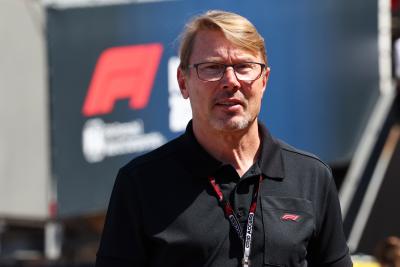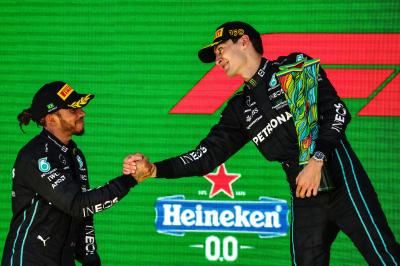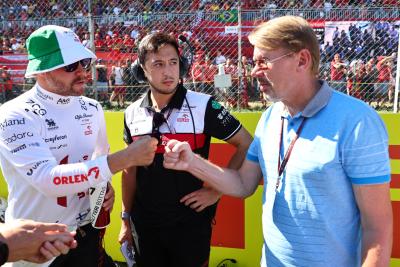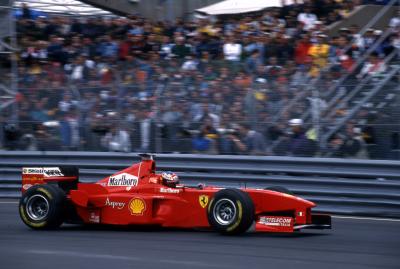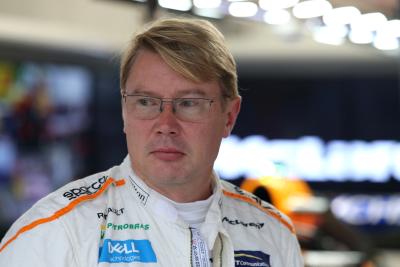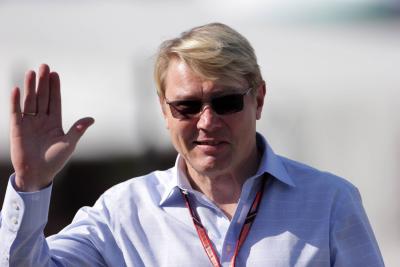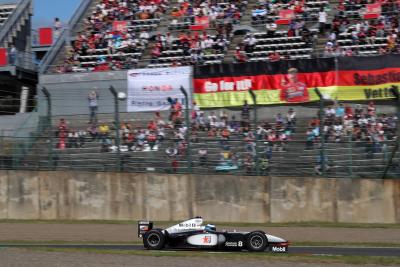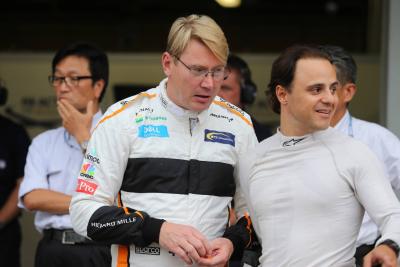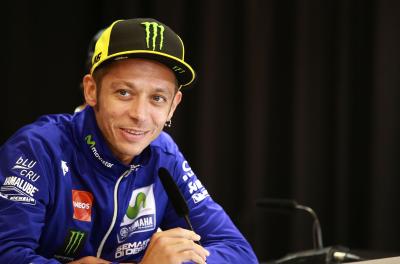Mika Häkkinen
Personal Information

About Mika Häkkinen
Mika Hakkinen F1 Career Overview
Hailing from a nation of ‘Flying Finns’, Mika Hakkinen is arguably the loftiest of them all, courtesy of his back-to-back F1 World Championship titles with McLaren in 1998 and 1999.
Career Stats
Latest News
Full Biography
Mika Hakkinen F1 Career Overview
Hailing from a nation of ‘Flying Finns’, Mika Hakkinen is arguably the loftiest of them all, courtesy of his back-to-back F1 World Championship titles with McLaren in 1998 and 1999.
Rapid through the junior ranks with the British F3 title en route to F1, while Hakkinen’s success at the pinnacle of the sport took time to gather momentum, once he - and the McLaren team he spent the majority of his career with - hit their stride, the rewards came thick and fast.
It very nearly wasn’t going to be though, after Hakkinen was involved in a serious accident at the season-ending 1995 Australian Grand Prix when a high-speed puncture caused him to crash at 120mph. Spending weeks in hospital, he was close to death but for an emergency procedure on track before he reached hospital.
While Hakkinen’s title-winning credentials weren’t clear during his first years in the uncompetitive Lotus before joining a McLaren team on the descent from earlier glories, a maiden win at the conclusion of the 1997 campaign was the cork in the bottle that led to his impressive streak in 1998 and 1999.
He continued for a further two seasons as McLaren slipped into another ailing patch before retiring, Hakkinen returning to competition in 2005 with a successful tilt at DTM (Deutsche Tourenwagen Masters)
Mika Häkkinen F1 Career: Team-by-Team
Team Lotus: 1991-1992
Hakkinen made his F1 debut on the back of his British F3 title win and quickly acquitted himself well, even if his maiden campaign peaked with a fifth place finish at Imola.
With a quicker Ford engine at his disposal Hakkinen enjoyed a stronger campaign that caught the attention of McLaren, finishing inside the top six on six occasions and peaking with a run to fourth at the French Grand Prix at Magny-Cours, a race he hadn’t qualified for the previous year.
McLaren: 1993-2001
McLaren subsequently snapped him as a third driver for 1993 in support of Ayrton Senna and Michael Andretti, but was drafted in for the final three events to replace the underperforming latter driver and quickly got to grips with the pressure by scoring a podium in his second outing at Suzuka.
Getting a full season for 1994 and becoming de facto team leader in Senna’s absence, Hakkinen suffered for a McLaren hamstrung by an engine - from F1 debutants Peugeot - that while quick on its day, demonstrated poor reliability, so much so it was referred to as the ‘hand grenade’ due to the frequency of blowouts.
A catalogue of DNFs dampened Hakkinen’s podiums at Imola and Silverstone initially but a purple patch led to a quartet of rostrums at Spa, Monza, Estoril and Jerez to lift the Finn to fourth overall, even if his copybook was blotted by one race ban for causing a multi-car accident in Germany.
A switch to Mercedes power showed promise for 1995 but the MP4/10 was a bloated machine that underwent numerous modifications as the season progressed. Results were solid and stronger than team-mate Mark Blundell (and briefly Nigel Mansell) and second place results at Monza and Suzuka lifted him to seventh overall. However, the year ended on a distressing note in Adelaide when a crash at 120mph following a puncture sent Hakkinen hard into the barriers, knocking him unconscious. But for the quick thinking of two spectating doctors - who performed an emergency tracheotomy at the scene - and the FIA medical team on circuit, Hakkinen is unlikely to have survived otherwise.
Despite the long stay in hospital, Hakkinen started the 1996 F1 season and found a more reliable car at his disposal, even if it remained lodged in a fight for ‘best of the rest’ with Benetton. Facing up to a rapid new team-mate in David Coulthard, Hakkinen yet again had the measure of his team-mate and while the McLaren wasn’t a race win contender, he finished all but five races in the points - including four podiums - to end the year fifth.
Dressed in silver for 1997, the McLaren-Mercedes once again took a step forward but remained just adrift of the Williams vs Ferrari title fight, Hakkinen keeping a watching brief all year before pouncing on their explosive feud in the Jerez finale to take an almost unnoticed maiden win amid the controversy of Michael Schumacher and Jacques Villeneuve.
The success would prove an omen for 1998 as McLaren-Mercedes finally struck gold (or silver) with the MP4/13, the first chassis designed by Adrian Newey. Tightly packaged and now endowed with a more reliable engine, Hakkinen and Coulthard burst out of the blocks dominantly, catching their rivals by surprise, with the Finn leading the charge with four wins in the opening six races.
That set the foundation for his title tilt, Hakkinen chased down by Schumacher’s Ferrari to keep the battle alive into the season finale but doing enough to keep him at bay with eight wins from 16 races.
The evolved MP/14 proved similarly formidable in the Finn’s hands in 1999 and while the car wasn’t as reliable, he had the measure of Eddie Irvine, who emerged as Hakkinen’s biggest rival after Schumacher was ruled out by injury.
In terms of pure performance Hakklnen’s McLaren had the clear edge but a late puncture while leading in Germany and a careless spin in Monza - prompting TV cameras to show him crying in the greenery behind the barriers - set up a title finale in which the Irishman held the four point advantage. However, victory in the Japan finale titled the crown back in his favour.
For 2000, Hakkinen and Schumacher engaged in another fierce duel that swung between the pair during two-thirds of the year. While the German had the edge initially as Hakkinen DNF’d in the opening two rounds, better fortune saw the McLaren nudge ahead with five rounds remaining. However, Schumacher’s rout of four wins in the final four events forced Hakkinen to cede the title.
The return of electronic driver aids saw McLaren slip back in the fight against the all-conquering Ferrari, while contending with a resurgence of the BMW-powered Williams team. Though he won at Silverstone and Monza, for the first time Hakkinen finished behind a team-mate (Coulthard) and after finishing sixth overall announced sabbatical from the sport, which became a formal retirement midway through 2002.
Mika Hakkinen - Beyond F1
Hakkinen maintained a low profile in the wake of his F1 retirement despite being approached by BAR and Williams in 2004, but instead made a racing comeback with a stint in the DTM with Mercedes for 2005.
Competing in the works HWA outfit against other ex-F1 drivers Jean Alesi and Heinz-Harald Frentzen,, Hakkinen enjoyed success quickly with a podium in his second race before winning third time out at Spa, results that spurred him on to fifth overall.
Success was less pronounced in 2006 with a trio of podiums scoring him sixth in the overall standings, before a final campaign in 2007 yielded two wins (Lausitzring and Mugello) but nothing better than eighth in the overall standings.
After this Hakkinen confirmed his retirement from motorsport entirely, which he has maintained to this day.

